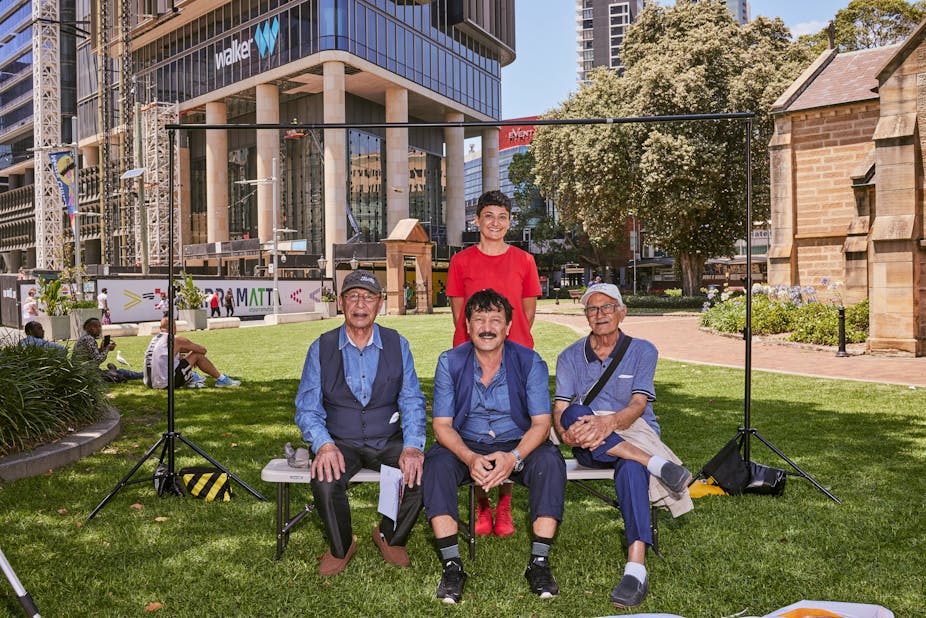In this episode of The Conversation Weekly podcast, we bring you three stories exploring how the arts help people deal with the challenges life throws at them. We’ll hear about a photography project in Sydney bringing people back together as COVID restrictions lift, the importance of storytelling and humour in Indigenous art in Australia, and why the second world war led to the birth of public arts funding in Britain.
First, we head to the City of Parramatta, a diverse suburb of Sydney, Australia, that’s changing fast as it undergoes a vast amount of construction and development. It was also an area hit hard by the COVID pandemic and subject to a hard lockdown. Reporter Olivia Rosenman went to Parramatta in mid-December to join a photoshoot organised by Cherine Fahd, associate professor at the School of Design at the University of Technology Sydney, for a new project: Being Together: Parramatta Yearbook.
Fahd has been commissioned by C3West, an arts programme in western Sydney run by the Museum of Contemporary Art Australia, to take portraits of people in the style of a school yearbook, amid the changing landscape of Parramatta. Some of the photos will be put on display in public in 2022 and compiled together in a printed yearbook. Fahd tells us that the project helps mark a moment in time, “a way of us coming back together after a period of social distancing and being apart”.
Next, we travel from Sydney up the eastern coast of Australia to Brisbane, where reporter Rhianna Patrick went to meet Angelina Hurley, a PhD candidate at Griffith University. Hurley is the daughter of the trailblazing Aboriginal artist Ron Hurley, and she talks to us about his life and work.
She explains how art used to process the trauma of colonisation for Aboriginal and Torres Strait Islanders in Australia, and also to give voice to other issues – sometimes with a big helping of humour. “You’re able to address hardship and help the community deal with it,” Hurley tells us.
In our final story, we head to Bristol in south-west England to meet Kirsty Sedgman, a lecturer in theatre at the University of Bristol. Sedgman takes us back to the second world war in Britain when, amid the death, destruction and deprivation of wartime, a new tradition was born: state money was spent to save an arts building for the first time.
The first recipient of this public arts funding was a theatre – the Bristol Old Vic. And instrumental to its wartime story is a famous economist, John Maynard Keynes. This was the first time public money was poured into a building that would house “grand cultural experiences”, Sedgman explains, “the kind that would rebuild Britain’s sense of itself from the ashes of the war”.
This episode of The Conversation Weekly is supported by the UK/Australia Season Patrons Board, the British Council and the Australian Government as part of the UK/Australia Season, which centres on the theme Who Are We Now? The season’s programme reflects on the two countries’ shared history, explores their current relationship, and imagines their future together.
To end this week’s episode, we’ve got some recommended reading from Gregory Rayko, international editor for The Conversation based in Paris.
This episode of The Conversation Weekly was produced by Mend Mariwany and Gemma Ware, with reporting by Rhianna Patrick and Olivia Rosenman and sound design by Eloise Stevens. Our theme music is by Neeta Sarl. You can find us on Twitter @TC_Audio, on Instagram at theconversationdotcom or via email. You can also sign up to The Conversation’s free daily email here.
You can listen to The Conversation Weekly via any of the apps listed above, download it directly via our RSS feed, or find out how else to listen here.

